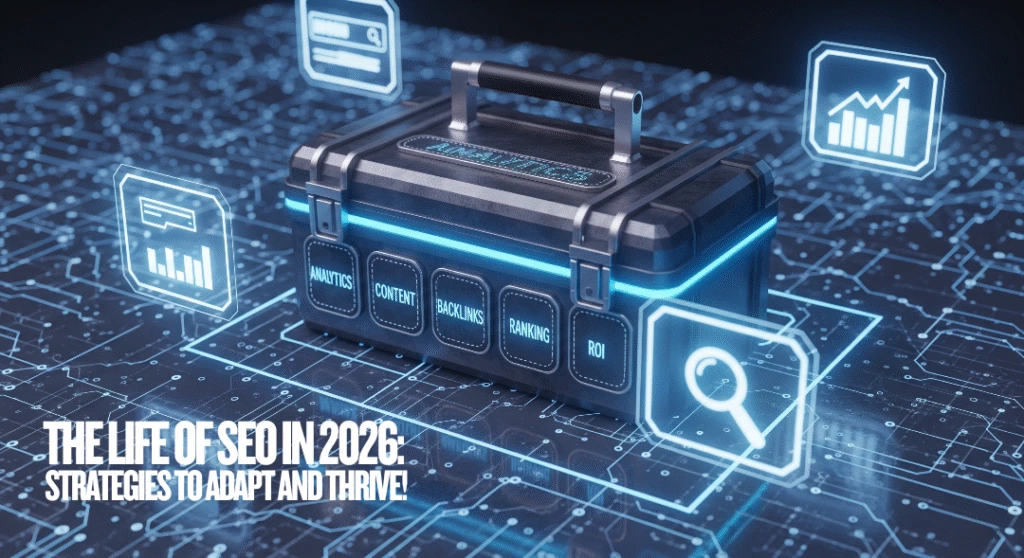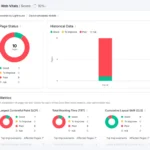
Introduction
In 2026, digital marketing is more competitive than ever. Simply running campaigns isn’t enough — you need data-driven insights to understand what works, optimize performance, and maximize ROI.
Data analytics helps marketers track traffic, conversions, user behavior, and SEO performance to make smarter decisions. By combining analytics with SEO, businesses can attract more qualified traffic, improve search rankings, and ultimately boost ROI.
This guide explores how to use data analytics to optimize digital marketing strategies, with a focus on SEO-driven growth.
1. Why Data Analytics is Critical for SEO and Marketing ROI
Data analytics provides a clear picture of your audience, traffic sources, and campaign performance. For SEO, it reveals:
- Which keywords drive traffic and conversions
- Which pages rank and engage users effectively
- Behavior flow to understand content gaps
- Opportunities for improving organic search ROI
💡 Example: If your blog ranks high for a keyword but users quickly leave the page, analytics can show that content needs optimization, better internal linking, or improved UX.
2. Key Metrics to Track for SEO-Driven ROI
- Organic Traffic: Track visits from search engines to measure which content attracts users.
- Keyword Rankings: Identify high-performing and underperforming keywords.
- Click-Through Rate (CTR): Optimize meta titles and descriptions to improve CTR.
- Bounce Rate & Dwell Time: Understand how engaging your content is for users.
- Conversion Rate: Measure how SEO traffic leads to sales, sign-ups, or leads.
- Backlink Performance: Monitor referring domains and link quality for authority.
💡 SEO Tip: Use tools like Google Analytics, Google Search Console, Ahrefs, or SEMrush to gather precise SEO data.
3. How to Use Analytics to Optimize Keyword Strategy
- Identify High-ROI Keywords: Use analytics to find which keywords generate traffic and conversions, not just clicks.
- Spot Keyword Gaps: Check competitor data to find untapped keywords in your niche.
- Optimize Existing Content: Update old blogs with trending keywords, better headings, and internal links.
📈 Pro Tip: Focus on long-tail keywords with strong intent — they often provide higher ROI than generic, competitive terms.
4. Improve Content Performance Using Analytics
Analytics reveals which content drives engagement and leads. Use it to:
- Enhance Underperforming Pages: Identify low-performing pages and improve content quality, SEO, or CTAs.
- Repurpose High-Performing Content: Convert popular blogs into videos, infographics, or email campaigns to expand reach.
- Personalize Content: Segment users based on behavior and tailor content for specific audiences.
💡 Example: If analytics show users spend more time on “SEO for small businesses” blogs, create a dedicated content series or lead magnet around that topic.
5. Use Data Analytics for Technical SEO Optimization
Data analytics isn’t limited to content — it also improves technical SEO:
- Site Speed & Performance: Track page load times and optimize for faster mobile experience.
- Crawl Errors & Broken Links: Use tools to identify and fix issues that hurt rankings.
- Structured Data & Schema: Monitor which pages with schema markup improve click-through rates.
- Internal Linking Strategy: Analyze behavior flow to optimize internal links for better engagement and ranking.
📊 Pro Tip: Technical improvements based on data often result in higher organic traffic and improved SEO ROI.
6. Track Multi-Channel SEO ROI
SEO doesn’t work in isolation. Analytics helps you understand how SEO interacts with other channels:
- Social Media: Which social platforms drive organic traffic to your content?
- Email Marketing: Which email campaigns lead to SEO landing page visits?
- Paid Ads: Compare organic vs. paid conversions to allocate budget wisely.
💡 Example: If Google Analytics shows that users coming from LinkedIn blogs are more likely to convert, increase content promotion there.
7. Leverage Predictive Analytics for SEO in 2026
AI and predictive analytics allow marketers to forecast trends and optimize campaigns proactively:
- Predict which keywords will perform well next quarter
- Identify content gaps before competitors do
- Forecast organic traffic and revenue potential
- Optimize SEO campaigns dynamically based on behavior trends
📈 SEO Tip: Tools like HubSpot, SEMrush, and Google Analytics 4 provide predictive insights for smarter SEO planning.
8. Best Practices to Maximize SEO ROI Using Data Analytics
- Regular Reporting: Track SEO KPIs weekly or monthly to spot trends.
- Set Clear Goals: Define what “ROI” means for your SEO efforts — traffic, leads, or sales.
- Test & Optimize: Use A/B testing for meta titles, CTAs, and content formats.
- Segment Traffic: Analyze organic traffic by device, location, or demographic to optimize SEO strategy.
- Continuous Improvement: Update content, keywords, and technical SEO based on analytics insights.
Conclusion
Data analytics and SEO go hand in hand in 2026. By analyzing user behavior, tracking keywords, monitoring content performance, and leveraging predictive analytics, businesses can make informed decisions, optimize marketing campaigns, and maximize ROI.
Remember: SEO alone drives traffic, but data-driven SEO decisions convert traffic into revenue, making analytics essential for business growth.
Our Services SEO Services in Jehanabad | SEO Services in Gaya | SEO Services in Nawada | SEO Services in Nawada
FAQs: Data Analytics & Digital Marketing ROI 2026
1. How can predictive analytics help small businesses plan SEO campaigns?
Predictive analytics can forecast trends, identify high-potential keywords, and suggest content topics likely to generate traffic and conversions, helping small businesses invest marketing resources wisely.
2. Can data analytics help identify underperforming marketing channels?
Yes. By analyzing traffic, engagement, and conversion metrics, businesses can pinpoint which channels (social media, email, or organic search) are not delivering ROI and optimize or reallocate resources accordingly.
3. How do I connect SEO metrics to overall business revenue?
By tracking keyword-driven traffic, landing page conversions, and sales attribution, you can link organic search performance directly to revenue, providing a clear picture of SEO’s impact on business growth.
4. Can marketing analytics improve content marketing strategy?
Absolutely. Analytics show which content types, topics, and formats generate highest engagement, shares, and conversions, allowing marketers to focus on high-performing content and adjust underperforming pages.
5. How does user behavior data improve conversion rates?
By analyzing behavior like time on page, scroll depth, and click patterns, you can identify friction points, optimize CTAs, improve UX, and guide users toward desired actions, ultimately increasing ROI.
6. Are real-time analytics useful for SEO campaigns?
Yes. Real-time analytics allow marketers to react quickly to trends, search algorithm updates, or competitor movements, making SEO campaigns more agile and effective.
7. Can data analytics help predict customer lifetime value (CLV) from SEO traffic?
Yes. By tracking user behavior, purchase frequency, and conversion patterns, analytics can estimate CLV, helping marketers prioritize high-value traffic and optimize SEO strategy for long-term ROI.
8. How can small teams leverage analytics without being overwhelmed?
Start by tracking only key SEO and conversion metrics, use dashboards for visualization, and automate reporting. Focus on actionable insights rather than every available data point to simplify decision-making.





